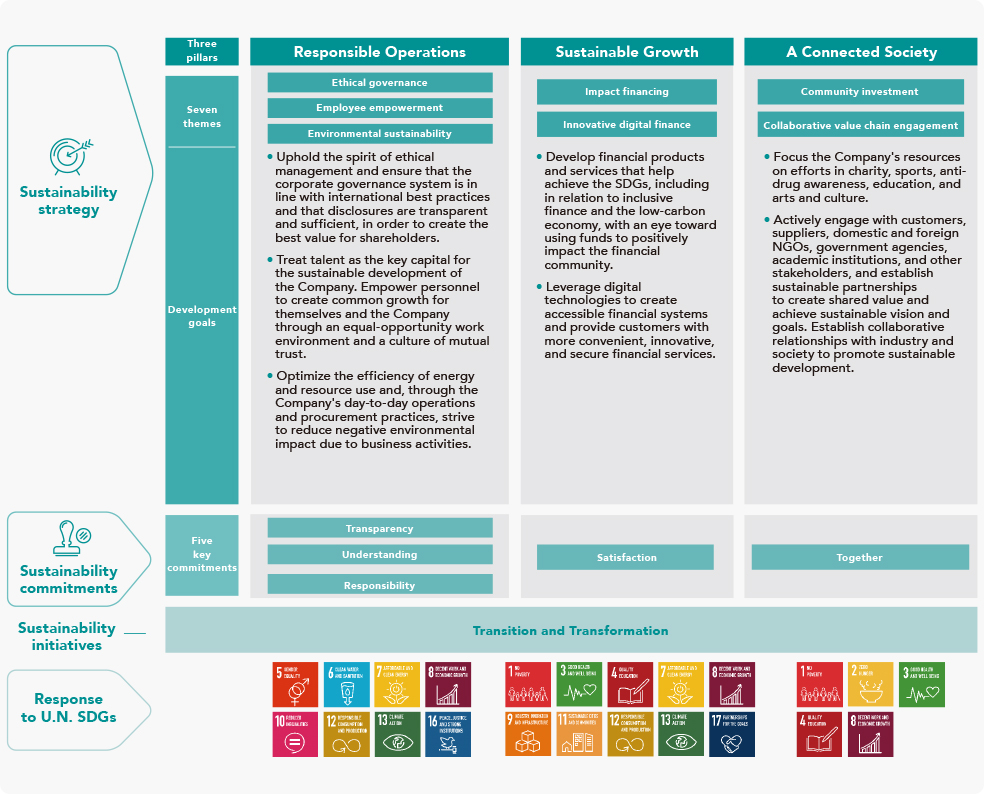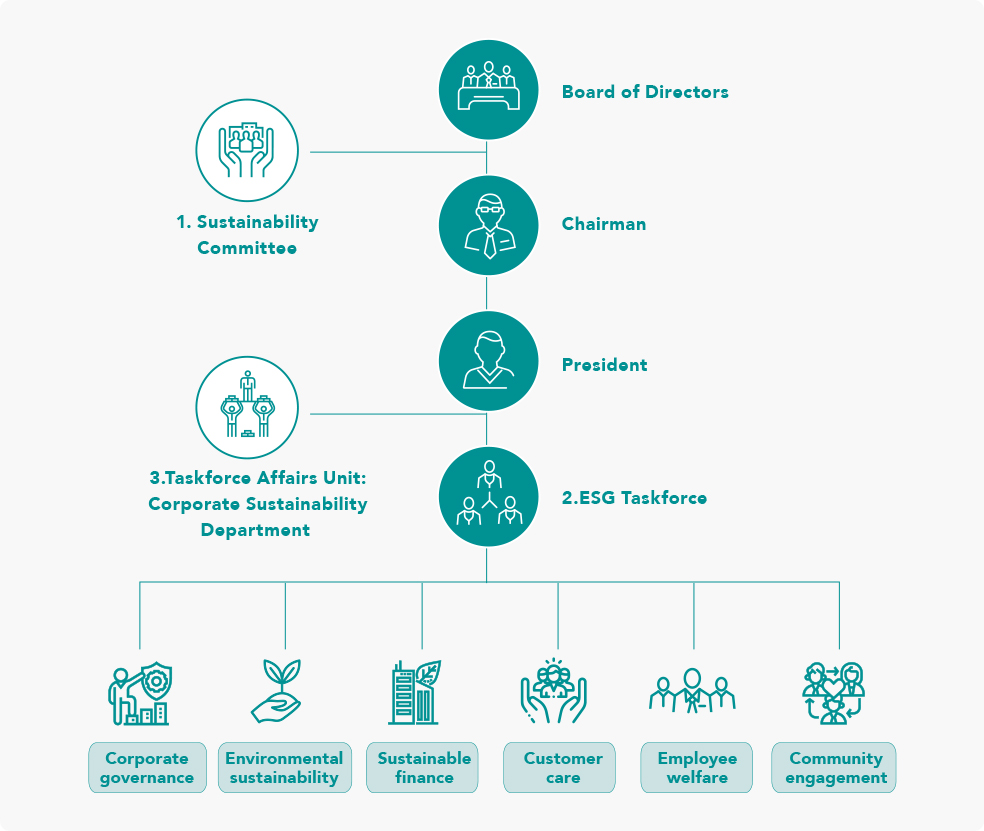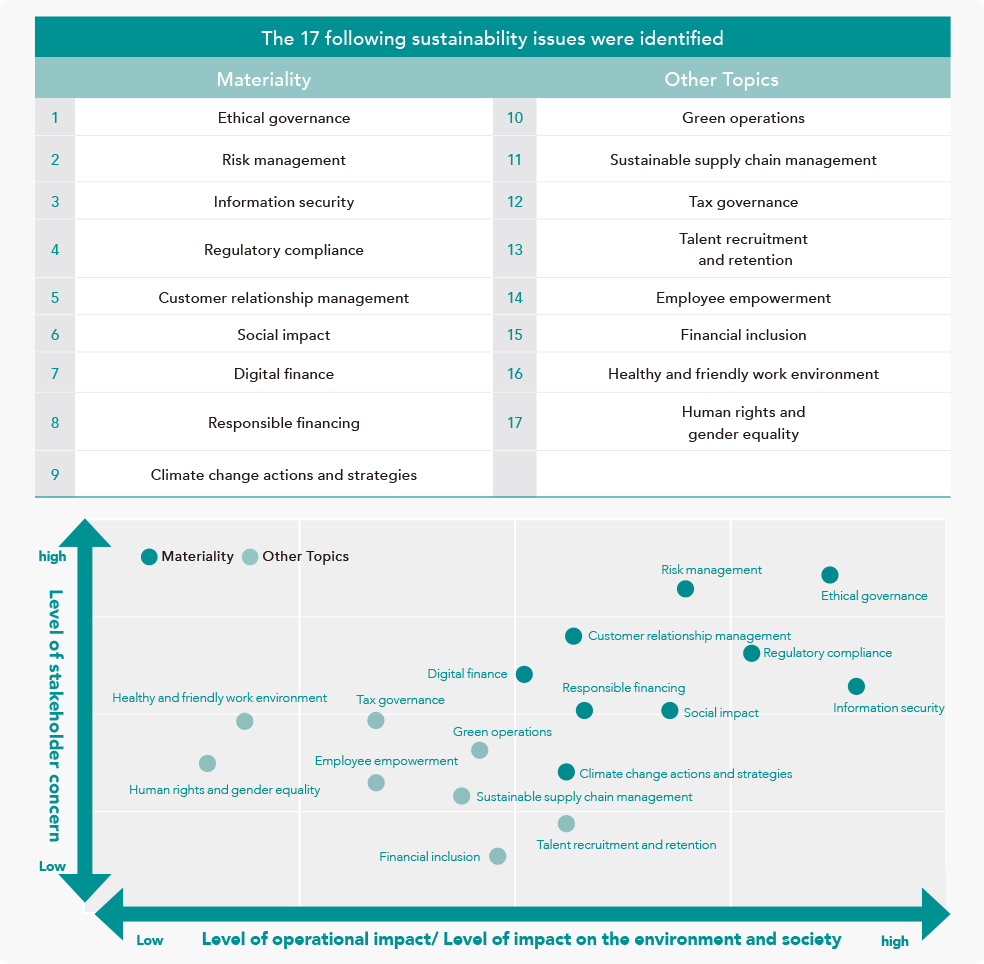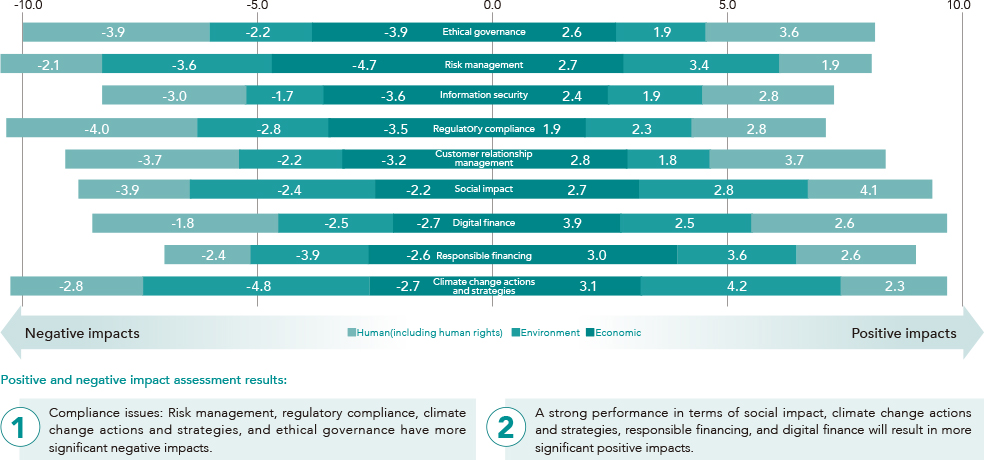strategy

In addition to following the Ethical Corporate Management Best Practice Principles, Sustainable Development Best Practice Principles, Corporate Governance Best Practice Principles, and Procedures for Ethical Management and Guidelines for Conduct, CTBC Holding has formulated a Sustainable Management Policy. Furthermore, the Company is committed to realizing the U.N. Sustainable Development Goals (SDGs) in order to maintain its business growth, protect stakeholders' interests, and support sustainable environmental and social development.
To these ends, CTBC Holding has adopted a world-class three-tier sustainability management structure. The first tier, namely the Corporate Sustainability Committee, acts as the highest supervisory unit. The second tier is the ESG Taskforce, composed of top management teams, charged with carrying out daily sustainability-related work. The third tier is the Corporate Sustainability Department, which is responsible for integrating the corporate sustainability strategies and action plans of the Company and its subsidiaries

Using the AA1000 Stakeholder Engagement Standard, we have identified "customers," "investors," "government," "community," "suppliers," and "employees" as our six key stakeholder groups and established multiple transparent communication channels to gather, analyze, and communicate issues of concern to them. The aim of these efforts is to enable stakeholders to understand how CTBC Holding is implementing corporate sustainability.
The governance and implementation of stakeholder communication occurs across three management levels:
- The results of the annual communication of material sustainability issues with stakeholders are reported by the Corporate Sustainability Department to the Corporate Sustainability Committee and the Board of Directors before the end of the respective year.
- The ESG Taskforce incorporates stakeholder concerns into the annual sustainability plan and daily operations, conducting tracking and review processes.
- The communication and engagement activities during day-to-day operations are summarized in the annual Sustainability Report, which is then reported to the Corporate Sustainability Committee and the Board of Directors in the following year. The Board of Directors and the Corporate Sustainability Committee oversee the effectiveness of communication and engagement efforts.




